How One of the World’s Leading Geneticists Recovered His Family’s Stolen Legacy
Will an art restitution allow Michael Hayden to reconnect with his German roots?
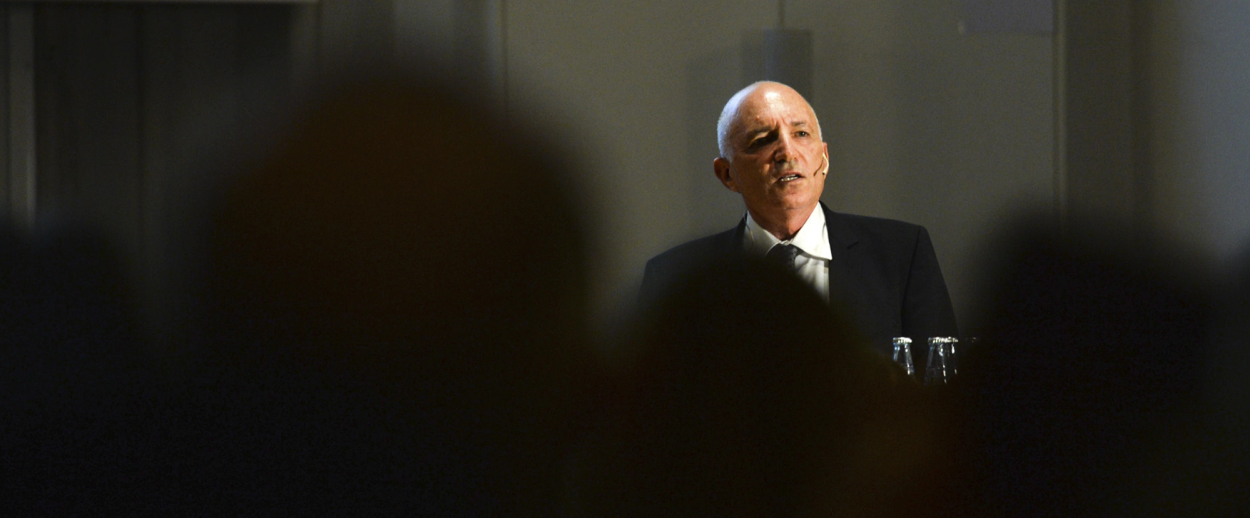
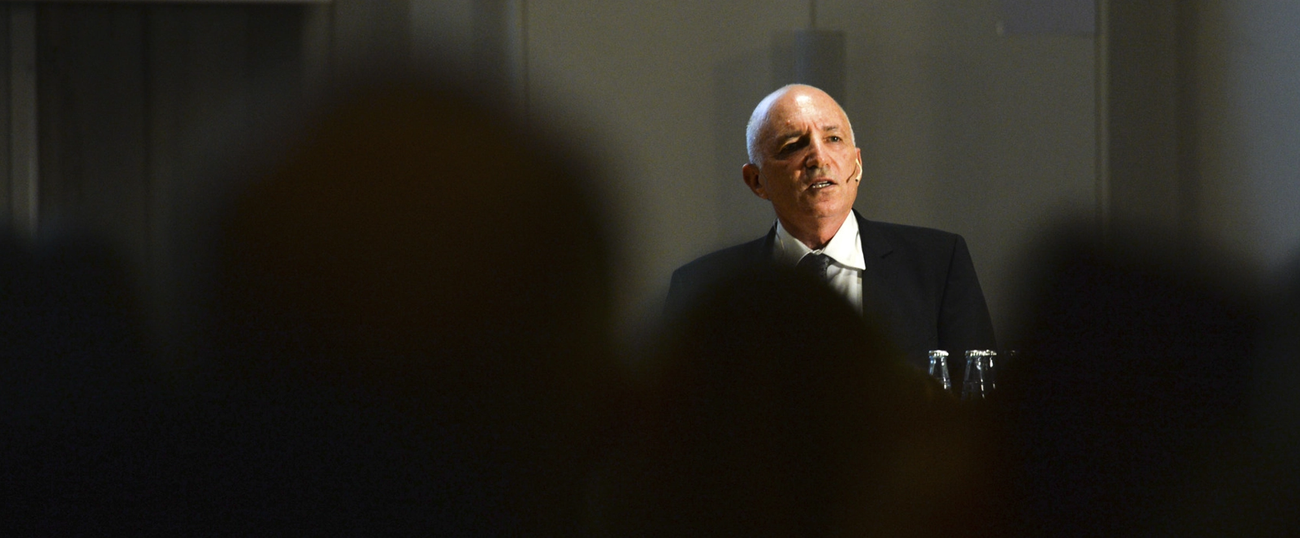


Sign up for special curated mailings of the best longform content from Tablet Magazine.
Four years ago, world-renowned geneticist Michael Hayden sat in the Göttingen city museum opposite its director, Dr. Ernst Böhme, having traveled from his home in Vancouver to his father’s German birthplace in search of objects belonging to his grandparents Max Raphael and Gertrud Hahn. While much of Max and Gertrud’s famous silver Judaica collection had been lost forever, provenance research showed that Hayden’s grandfather had sold a number of personal items to the local city museum in 1938, amid the so-called aryanization process that forced Jews to transfer their property into non-Jewish hands before they were deported and murdered.
The mood in the room was tense. Böhme told Hayden that while he wished to start returning his family’s objects, unfortunately he didn’t know where they were. Hayden was irked by the curator’s intimation that the museum had purchased the items for a fair price. In response to a lengthy list of objects that the museum was known to have acquired, Böhme showed Hayden two chairs. “I was so moved I had to go to the washroom, because I was seeing for the first time a direct link to my grandparents,” Hayden told me later. But shortly after the breakthrough came disappointment—they weren’t his family’s chairs after all. Hayden was devastated. “I felt like I’d invested emotionally into something that wasn’t real,” he said. “I felt betrayed.”
Three years later, on a chilly Saturday morning in November, the four grandchildren and nine great-grandchildren of Max Raphael Hahn converged on the Göttingen city museum once again. They had flown in from Brussels, London, Cape Town, Vancouver, Toronto, Los Angeles, Tel Aviv, and New York. The occasion was restitution—the first time that a local history museum in Lower Saxony would return Jewish-owned objects acquired during the Nazi regime.
Designed in the city’s traditional half-timbered style, the museum stands in the heart of Göttingen’s old city center. Its arched entranceway is flanked by wildflowers and statues of stone angels, like a cottage from a Hans Christen Andersen fable. Inside, a small museum exhibit had been set up to showcase the objects belonging to Hayden’s grandparents—the right objects, this time—including a rich burgundy rococo living-room set, a 19th-century tortoiseshell comb, and a Hebrew prayer book from circa 1714. Hayden—slight, bald, and sharp-eyed, clad in a long black coat, strode through purposefully, bending to read the captions. Hayden and his family had arrived in Göttingen knowing the museum finally planned to return the objects, but all this fanfare—the museum exhibit, and the obvious amount of effort that had gone into displaying and showcasing the objects was unexpected. “I didn’t know this exhibit was happening,” he exclaimed. “Unbelievable.”
One room over, in front of a crowd of almost a hundred people, the city’s new mayor, Rolf-Georg Köhler, delivered his first public speech since taking office eight days prior. A burly man with a helmet of white hair, he spoke emotionally in German, using the sort of rhetoric that is rarely heard in the conservative, insular cities and towns of the German heartland. “This visit burdens you with walking a difficult path to this building, a building in which for so long property wrested from your grandparents, Max Raphael and Gertrud Hahn, has been kept,” the mayor said, his deep voice cracking with emotion. “We want to ask for forgiveness but know that we have no right to this forgiveness. We do this publicly with a recognition of our great guilt, in the hope that you will accept this small gesture of reparation.”
Visibly overcome, Michael Hayden took to the podium, where for neither the first nor last time that weekend, he would commend the city, complicit in the murder of his family, for its willingness to own up to its shameful past. “The objects are important not in terms of their value, but in terms of their significance,” he said. “For me, it’s a step toward trying to close what is a deep and painful wound that stays with me every day. And trying to move forward to a new reality, of new relations, new acknowledgments, and some peace.”
***
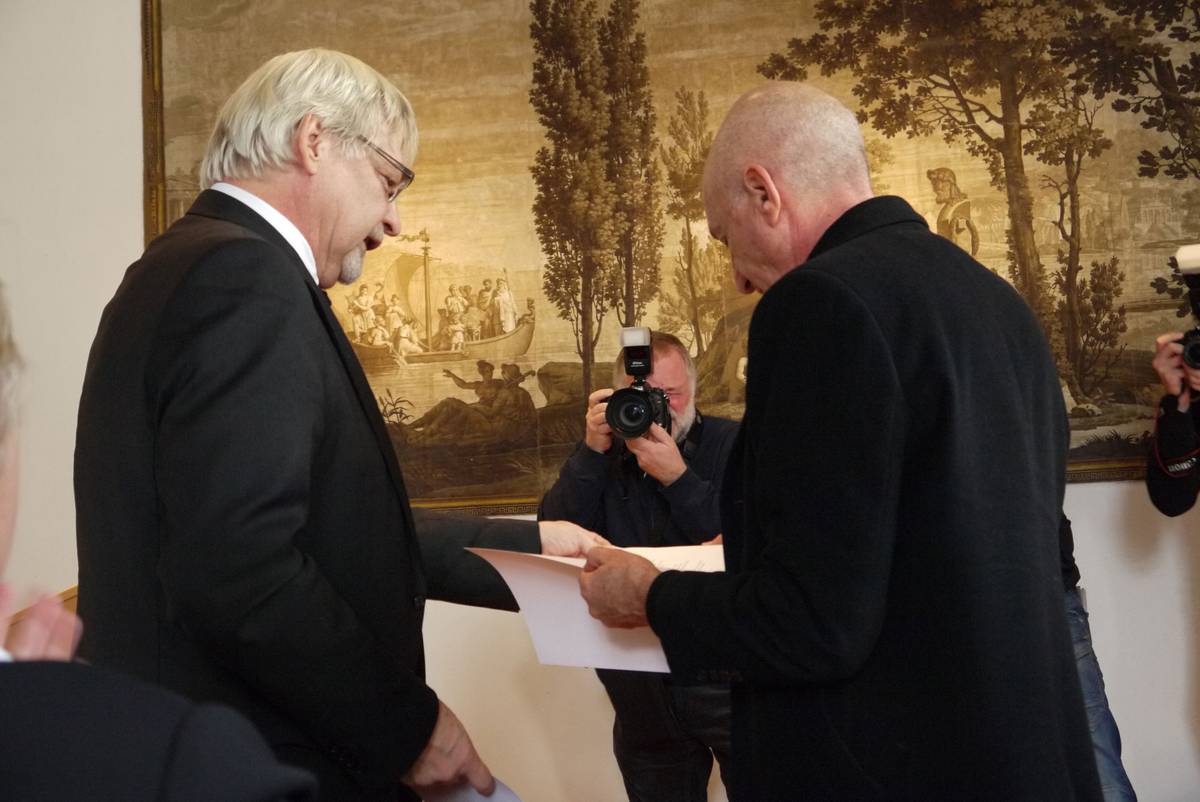
The trip to Göttingen marked the first time all four grandchildren and nine great-grandchildren of Max Raphael Hahn had been in the same place at once. Both of Max and Gertrud’s two children, Rudolf (later Roger) and Hanni, survived the war. In attendance were Roger’s two sons, Michael and Jonathan Hayden, and Hanni’s two daughters, Trudy Barton and Diana Kanter, and all their children, some of whom had decided to come only a few weeks prior. (I was invited on the trip via Hayden’s son Gideon Hayden, a college friend.)
At the hotel on Friday morning, Sharon Meen, the head researcher on the Hahn project and organizer of the trip, handed us all tightly scheduled itineraries. Friday was to be focused on science, with the awarding of an honorary doctorate to Hayden by Göttingen University and the announcement of a neuroscience research alliance between Germany and Israel sponsored by TEVA, the world’s largest generic pharmaceuticals company, where Hayden serves as president of Global R&D and chief scientific officer. Saturday, meanwhile, would be focused on family history: the return of the objects; the placing of a plaque on their ancestral home; the republication of a book about the family, in German; and a walking tour of Hahn life in the city as it used to be.
Meen also handed us all two laminated city maps, displaying 36 significant Hahn spots that we would visit over the course of the weekend. Founded around 1200 C.E., Göttingen is a university city of approximately 120,000 located in the southern part of Germany’s sparsely populated Lower Saxony region. The city’s distinctive half-timbered buildings were largely spared by the Allied bombing campaign (there are rumors of an agreement that the Allies would spare Göttingen and Heidelberg if the Nazis spared Oxford and Cambridge). Göttingen is laid out in a circle, the old city center circumscribed by a ring of forested park land, which has been planted atop the medieval ramparts of the old city. On our maps, the old city center appears as a maze of narrow winding streets surrounding a central square, while the many buildings, residences, and establishments once owned by the Hahn family are marked with green dots. Following the dots, it is easy to trace the family’s rise through society, as their business grew and their real-estate holdings multiplied in the early 20th century.
The world-famous Göttingen University, where Hayden will receive his honorary doctorate on Friday evening, lies to the north of the old city. Göttingen has been associated with 45 Nobel Prize winners (the most of any non-British and non-American university), including two of Hayden’s scientific heroes, Max Born and James Franck. Marble memorial plaques around the city commemorate its many great scholars, from Wilhelm Gauss to the Brothers Grimm. To this day, Göttingen remains a city of learning, overrun with students on bikes, women swaddled in wraparound scarves, laptop bags swinging from shoulders.
Yet Göttingen is also a city with a dark past. Like many small cities and towns in central Germany, it was a hub of conservatism and anti-Semitism, quick to embrace the Nazi regime. Göttingen’s status as a cradle of intellect and free-thinking rapidly dissipated when the Nazis came to power in 1933, with professors expelled from their posts and free discourse stifled. The red dots on our maps indicate the Nazi landmarks—the Gestapo headquarters, the jail, the police jail—that irreparably altered life for the Hahns in the 1930s. As we walk through the city streets, we trace the route that Gertrud Hahn walked every day from her house at Merkelstrasse 3 to jail—first the police jail, then the Gestapo jail—to visit her husband after his imprisonment on Kristallnacht and the many bureaucratic offices she passed on the way trying to negotiate his release.
Unlike Berlin, with its extensive memory infrastructure and the droves of tourists who travel to visit the Libeskind Holocaust Museum or who climb among the stellae of the Eisenman memorial, Göttingen has been slow to acknowledge its Nazi past. While there is a Holocaust memorial in the location of the city’s destroyed synagogue, which was burned down in 1938, there is comparatively little in the way of displays of contemporary public memory. At the time of our trip, Göttingen had no stolpersteine, the memorial cobblestones placed around Germany that commemorate each individual victim of Nazism, which have spurred the process of public memory in much of the country (it now has laid 10 stolpersteine and plans to lay more). Up until 2013, the boys’ high school Hayden’s father attended was home to a memorial honoring the school’s Nazi war dead. “It’s very behind,” said Meen, as we sat in the lobby on Friday morning waiting for the last stragglers to arrive. “I’ve been working in Germany for years and years, and Göttingen is really not a happy place when it comes to restitution or any of those themes.”
***
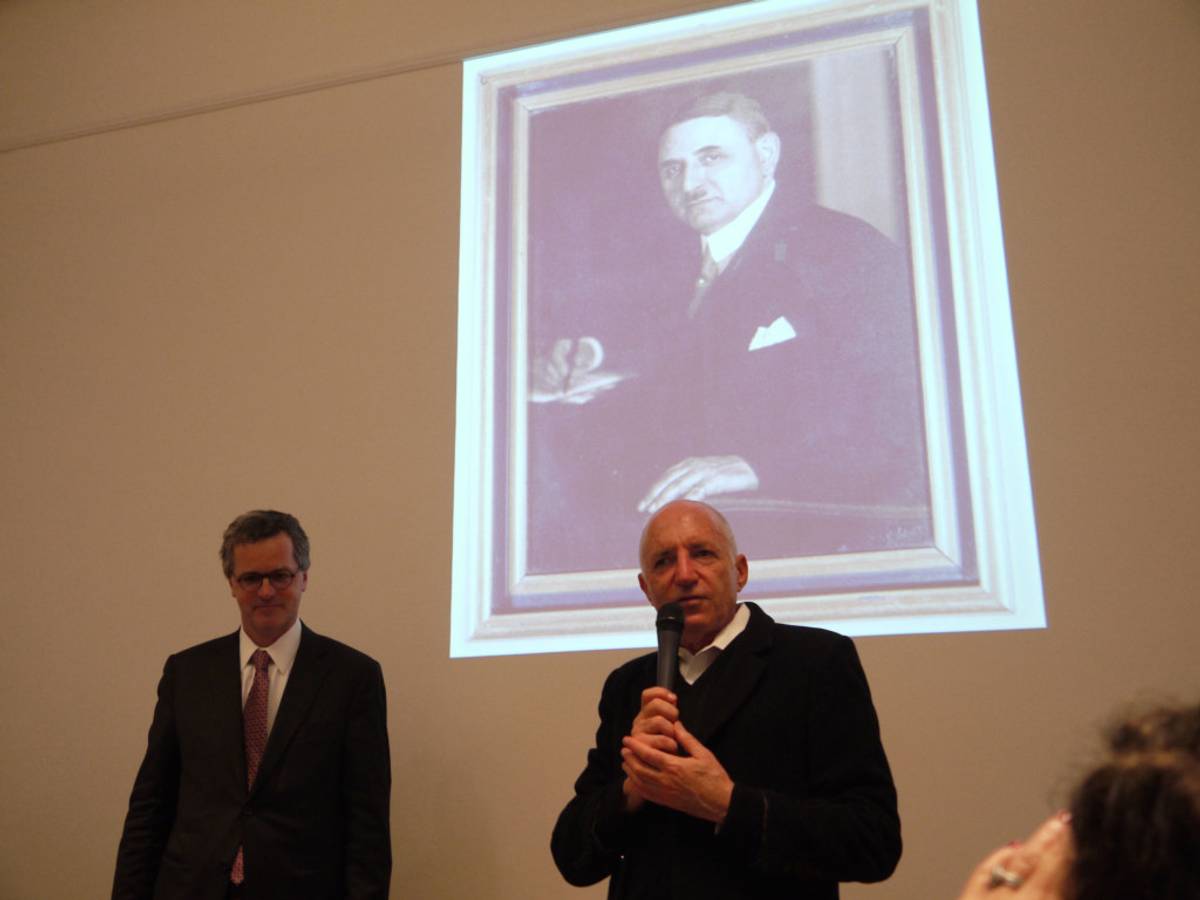
Max Raphael Hahn was born in Göttingen in 1880. His father Raphael Hahn was a businessman who had already been successful trading rawhides, pelts, and sheepskins. Max and his brother Nathan grew their father’s company to international renown, and it became one of the town’s most successful enterprises. Nathan was the quiet one, while Max was the charismatic entrepreneur, a civic leader and shrewd businessman who was deeply in touch with the Jewish and German halves of his identity, serving as both a leader of Göttingen’s Jewish community and as a senior member of the War Office procuring arms for the German Army in WWI. Like his father, he was also a great collector with a passion for Judaica, amassing, along with the Sassoons and Rothschilds, one of the most significant private collections in Europe.On Kristallnacht—the night of Nov. 9, 1938—SS men came to the Hahns’ family home at Merkelstrasse 3. They broke into the house in the middle of the night, forcing Max Raphael and his family naked into the street, shattering their windows, ransacking their home and vandalizing their possessions. They arrested Max and Gertrud, along with Max’s brother Nathan and his wife Betty. Max remained in jail in Göttingen for close to nine months, during which time his prized silver Judaica collection was confiscated. As the Nazis proceeded to strip him of his wealth and possessions, Max sold a handful of items—including a sofa, two chairs, a comb, and a serviette—to the local City Museum in Göttingen, for a price less than they were worth.
Even while imprisoned, Max Raphael engaged in a lengthy battle to save his Judaica, hiring a lawyer and writing to relatives in the United States and other parts of Europe for money to pay the high tax needed to get the items back and export them to the States. His family begged him to let it go, but Max would not give up. “I will always fight, even against your will, to save my family from this mess and to save what I can.” Max wrote to his son Rudolf (Roger) in 1939. “Even if I don’t succeed, I will know that I have not left anything untried.”
In 2011, Hayden commissioned a book about his grandfather’s collection titled The Hahn and Hayden Collections: A Legacy of Loss, Courage and Revival. Full of vivid color images, the book details the significance of collecting to the family, describing the ability of heirlooms to “bear witness to the past” and to “speak of continuity between generations.” The book shows the extent of Max’s doggedness in trying to save his collection, and devotes many pages to his failed attempts navigate Nazi bureaucracy. “It is a story that speaks to a family’s love of objects of beauty and to the creative synergy engendered in the act of collecting, as well as to the responsibility and custodianship that this activity imposes on the collector,” the book reads. Most of Max’s silver Judaica collection was never recovered.
After his release from jail in Göttingen, Max and Gertrud moved to Hamburg with hopes of emigrating, but the hour had grown too late. A stolperstein dedicated to Max and Gertrud in Hamburg details their fate: On Dec. 6, 1941, they were deported to Riga. It is believed that Gertrud died in transit, while Max was likely murdered in the so-called Dünamünde action on a farm outside Riga in 1942. His brother Nathan and Nathan’s wife Betty were deported to Theresienstadt in 1942 and then to Treblinka where they were murdered.
Some members of the family were able to escape. Max and Gertrud’s children were sent to England, where Hanni eventually married Robert Barton and had two daughters, Trudy and Diana. Rudolf Hahn changed his name to Roger Hayden, and after enlisting in the British Army and fighting during the war years—during which he was briefly stationed in Göttingen—he moved to South Africa and married Ann Platt, where they had two sons, Michael and Jonathan. The boys grew up in Cape Town, never hearing their father speak in his mother tongue, but knowing to steer clear of Staedtler pencils and not to ride in a Mercedes.
The other things that survived were a handful of “lifts”—shipping containers—containing possessions and documents that were sent to safe havens in Sweden and Switzerland in 1940 and 1941, including household items, photographs, books, papers, and a few items of Judaica that had escaped confiscation by the Nazis (many of which were later sold in order to finance shipping costs). The family papers sat in boxes for decades. They were shipped to Hayden’s home in Vancouver after his father’s death in 1984, where they sat completely untouched, gathering dust, for over 20 years, until Hayden cracked them open and set this whole chain of events in motion.
***
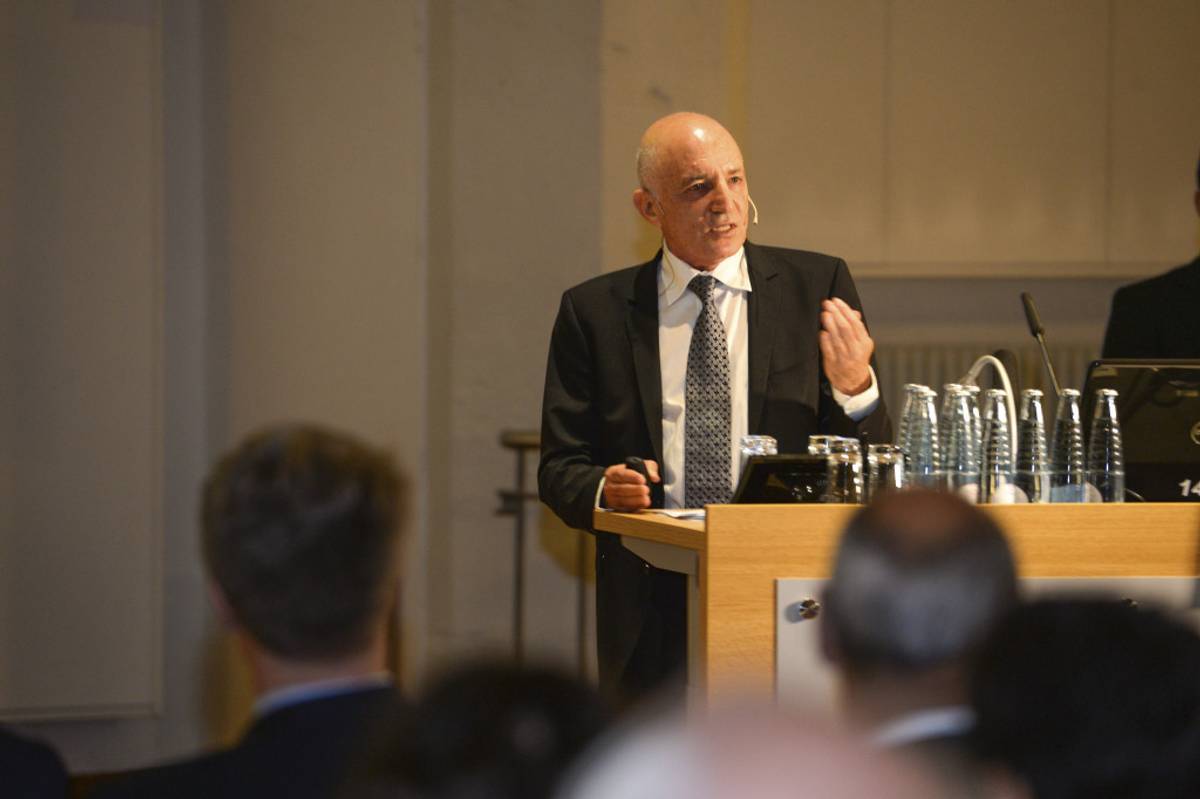
Growing up among modest means in Cape Town, Michael Hayden was raised mostly by his bohemian mother, Ann, after she divorced her husband when Michael was 8 years old. After graduating at the top of his class at University of Cape Town’s medical school, he became interested in the nascent field of genetics, earning his doctorate at Cape Town, taking a post-doctoral fellowship at Harvard medical school, and then—in a move that shocked his colleagues—leaving Harvard for Vancouver’s University of British Columbia medical school, where he founded a genetic research center. He became one of the world’s leading experts on Huntington’s Disease and received the Gairdner Wightman Award, Canada’s highest award for leadership in medical science, as well as the Order of British Columbia and the Order of Canada.
Hayden also flourished as a businessman and biotech entrepreneur, founding three major biotechnology companies: NeuroVir, Aspreva (which sold in 2007 for over $900 million), and Xenon, which licensed Glybera, the first-ever gene therapy. He now lives in Israel working for TEVA, the world’s largest generic pharmaceuticals company. Like his father, grandfather, and great grandfather before him, he is a collector of Judaica and Jewish ceremonial art and also of other objects whose resonance is more personal: Japanese toys, baskets from the Nootka tribe (a First Nations peoples from Canada’s Pacific Northwest Coast), vintage travel posters, and he owns one of the world’s largest Ben Shahn collections. He and his wife Sandy have four adult children: Sarah, Anna, Jessica, and Gideon.
Hayden is a man of commanding presence and tremendous energy. As Tom Walliser, one of our guides on the trip, put it: “He’s like a volcano in constant eruption.” He is wryly funny, aloof, and warm in equal measure. For a scientist who deals in minutiae, he is an unusually broad and flexible thinker, and he sees his humanitarian enterprises as inextricable from his scientific pursuits. As a child, his mother railed against the Apartheid system, welcoming friends of all races into her home, and this spirit of tolerance stuck with him. “Very early on I got an early, excellent education into what are the important principles of being a scientist,” he said. “Not to believe things one was told, not to believe the laws, to be part of dissent.”
While Hayden always viewed himself as a crusader against Apartheid, he was never fixated on the Holocaust, which he did not see as an intrinsic part of his own psyche or personal history. His father’s death in 1984 and the birth of his children spurred him to question more about his past. In the mid-2000s, he would finally open the boxes from the shipping containers and start combing through a trove of more than 6,000 documents and photographs chronicling his grandparents’ lives, a historic record extraordinary in its detail. His first step was commissioning the book about Max Raphael’s Judaica collection.
“There were other people writing about our family from Göttingen, and I knew nothing about them,” he told me when we met in New York prior to the trip. “It was like they were writing of a family I knew nothing about. I was on a real personal journey to understand who they were, to understand where I came from, and to understand what really happened.”
When he talks about the war, Hayden seems to struggle to comprehend how his grandfather—a man so successful and so beloved, a man much like himself—could fall victim to the forces of history, and how the civilized, intellectually rich Germany of the 1920s could give way to the ghastly mutation that followed.
‘This is really a story of forgiveness, for me being open, of finding a way to not forget the past, but not to be captive by it.’
“He wasn’t a Zionist. He loved Germany. It wasn’t like he wanted to go to Israel,” he told me. “My grandfather was deeply, deeply German. And I think for me it also raises the issues of being too affiliated with any country.” When I asked if he felt German at all, he shook his head. “No. I don’t like the food. I do like the rigor. And I do like the discipline around data and the integrity there. I’m deeply methodical in what I do. Probably if I could credit my thinking and my rigor and my logic…” he paused, cutting himself off. “But I still don’t feel myself as German.”
Hayden’s eyes occasionally flash with anger when he talks about the stolen objects. Like his grandfather, he is tenacious and relentless in his quest to see them returned. Yet the objects are only the starting point, the concrete matter of restitution. Our trip is about restitution in other, less material ways: the mending of a rift and the establishment of a new relationship between Göttingen and its orphaned Jewish descendants.
“This is really a story of forgiveness, for me being open, of finding a way to not forget the past, but not to be captive by it,” said Hayden. “And for those people who cannot forgive, you end up being captive by it. I want to move beyond the bitterness and beyond the sadness to a place of recognition of who [my grandparents] were, what they stood for, what they did in their community, and to draw strength and inspiration from that.”
***
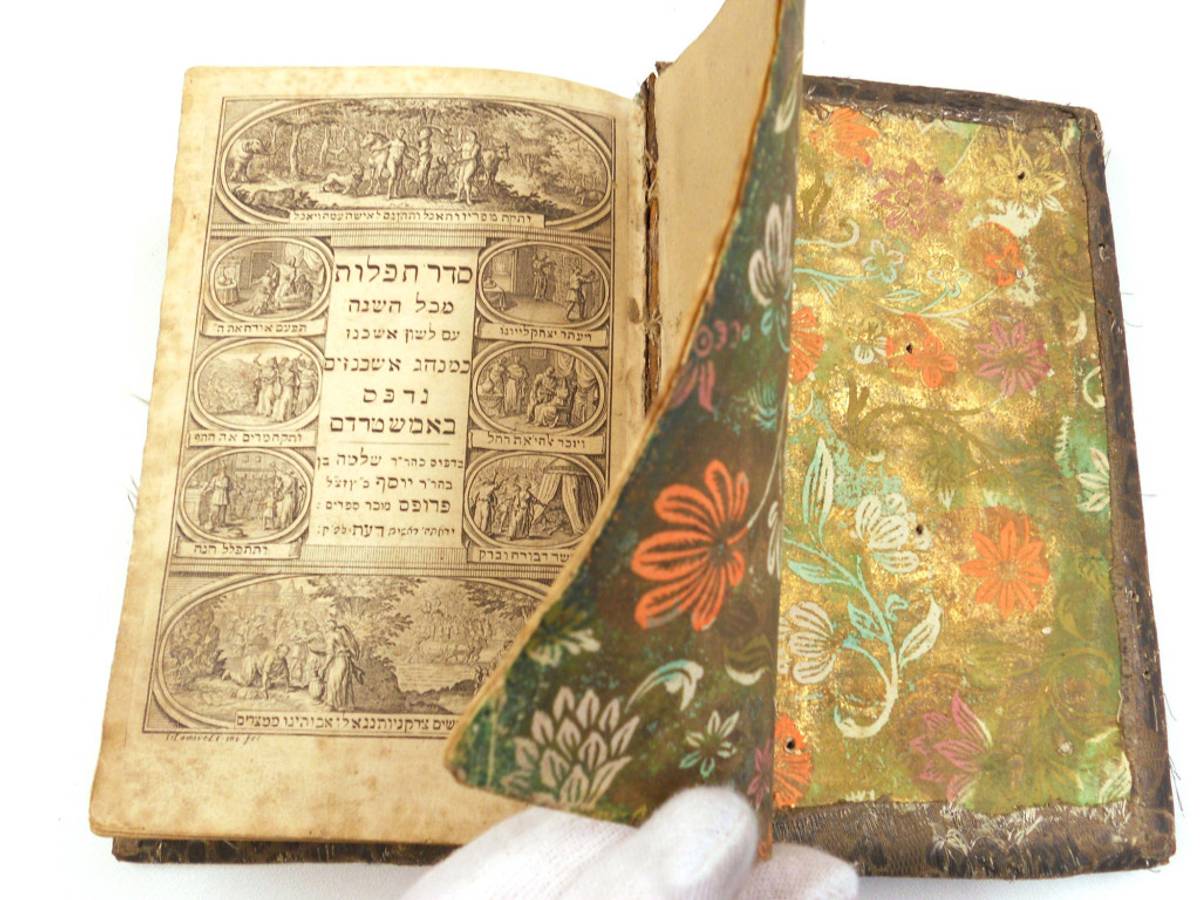
Hayden’s efforts arrive at a time of renewed interest in the restitution of art and plundered cultural property in general. The 1990s saw the beginning of a public conversation about Nazi looted art, culminating in a landmark 1998 conference sponsored by the State Department and the U.S. Holocaust Memorial Museum inaugurating the so-called Washington Principles, in which 44 countries mutually agreed to open up their archives and offer greater transparency into what they held in their collections. There is much more public will and moral urgency behind restitution now than there was, say, in 1951, when a German court refused to provide Hanni Barton and Roger Hayden with restitution, or even in 1957, when they finally received compensation for their parents’ stolen silver Judaica, to the tune of $12,232 in 1957 US dollars.
In the last two decades, compared to other countries, the Germans have been leaders when it comes to restituting stolen cultural property. In 2001, the Central Office for the Documentation of Lost Cultural Assets was launched in Magdeburg, along with a web-based database called lostart.de, which gathers information about objects acquired as a result of the persecution of Jews. Still, as scholars Wesley A. Fisher and Ruth Weinberger point out, very few returns have resulted from lostart.de. Even in Germany, where there is considerable public interest in restitution, as of 2014 they could pinpoint only about 350 museums out of 3,000 that were engaged in some sort of provenance research.
“I think most of the time it’s going to be when you’ve got a powerhouse guy like Michael Hayden making it happen, or on the rare occasion when you have a curator who is a powerhouse, who has a real conscience, who really wants to get to the bottom of this,” said Dr. Ori Z Soltes, a Georgetown professor and a co-founder of the Holocaust Art Restitution Project. “But people like this are very few and far between.”
Göttingen is one of the few museums to do independent provenance research, publishing a list of its aryanized objects on lostart.de in 2008-2009. Still, a source at the Göttingen city museum, who wished to remain anonymous, described a tension between official and private attitudes to restitution. “I sensed a certain gap between how it was communicated to the press, which is that it was very important, and then the real everyday work here in the museum was not so enthusiastic about finding things and locating them,” the source said. Meen and Hayden describe a similar early hesitancy from Böhme, the director of the Göttingen museum, when they came asking for the objects, an outlook they believe has softened over time.
When I talked to Böhme—who doesn’t speak much English—he told me it was a great experience for him to see the emotions of the family when they got the objects back. He pointed out that his was the first local museum to engage in restitution of this sort. “I hope that this change will come, but it is a very slow process,” he said, adding that while it is not the museum’s duty to return the items, he feels that it is a moral and ethical thing to do. The museum continues to hold in its collection objects from two other Jewish familes, the Kahns and the Francks, and he said that the museum would be willing to give back their objects, should their descendants, like Hayden, come seeking it. (My source at the museum, however, expressed concern about the lack of momentum around the return of the Kahn and Franck family objects, in the absence of someone like Hayden to spearhead the restitution process).
As soon as the book documenting his grandfather’s collection was complete, Hayden began the process of demanding restitution for the few objects whose whereabouts he knew—the objects his grandfather had sold to the Göttingen city museum under duress in 1938—and Meen set about combing the lostart.de database and compiling a list of all the items that the museum had identified, as well as items she matched to old photos taken inside the Hahn residence. What Meen and Hayden quickly realized was that just because the museum had listed the objects didn’t mean they could actually put their hands on them. “So here came a family that said this is great, you’ve listed your items, now we’d like them back,” explained Meen. “And the big dilemma for the museum was, well, they had to find them.” As Hayden and Meen continued to communicate with the museum after the 2011 meeting, with Meen visiting regularly and prodding and encouraging their work, gradually, one by one, the objects started to emerge.
The search process sped up significantly with the museum’s hiring of Christian Riemenschneider last fall. A diligent archivist with a long-held passion for Jewish history and culture, Riemenschneider grew up with an insatiable curiosity about the past his grandparents refused to talk about, wondering what had happened to the unfamiliar Jewish names in the cemeteries where he and his friends used to play. “It is also an aspect of my interest in Jewish culture, that it was so connected to German culture, so how did it happen that these two aspects of those same thing became so divorced?” he said. Upon his arrival at the beginning, he began doing his own inventory of the museum’s Judaica collection, and most recently tracking down the Hahn items that remained missing.
Just two weeks before our trip to Göttingen, Riemenschneider had happened to look at the museum’s accession register, where he noticed a listing for 10 decorative cast-iron stove plates belonging to the Hahn family. Recalling a group of about 150 or 160 stove plates he had spotted in the museum’s basement, he grabbed his flashlight and headed down to the medieval stone vault overflowing with cannonballs and old sewing machines, “like the grave of Tutankhamen,” he put it. Sifting through the piles of dusty, rusted stove plates, he painstakingly cross-referenced the trove in the basement with the descriptions from the accession register until he had located nine of the 10 missing Hahn stove plates.
After the restitution ceremony ended, Riemenschneider ushered Hayden and his extended family into a small storage area off the main exhibit room, where he excitedly showed off his latest discovery. Riemenschneider is 39 but looks much younger. He has a scruffy beard and a warm, smiling demeanor, and had dressed for the occasion in a periwinkle blue suit jacket and matching pocket square. We crammed in, elbow-to-elbow, and gazed in astonishment at the nine stove plates lined up against the wall, this orphaned bric-a-brac of history. Some colorful, some unvarnished, the stove plates depicted a range of scenes: a leaping horse, the Garden of Eden, a coat of armor. “Back then it was like collecting stamps,” Riemenschneider explained of the collection, adding that some of the stove plates may have hung in the grand entranceway of Max Raphael and Gertrud Hahn’s family home. We stared silently, trying to imagine what role these incongruous objects played in Max Raphael’s collection, what the pieces would have said about the people that owned them.
“After the exhibit, what’s going to happen to all this stuff?” asked David, Hayden’s nephew, quietly.
“We’re going to discuss that as a family,” Hayden responded. “This is all new.”
He beamed at Riemenschneider, his eyes alight. “We cannot wait to see what you’ll find next.”
***
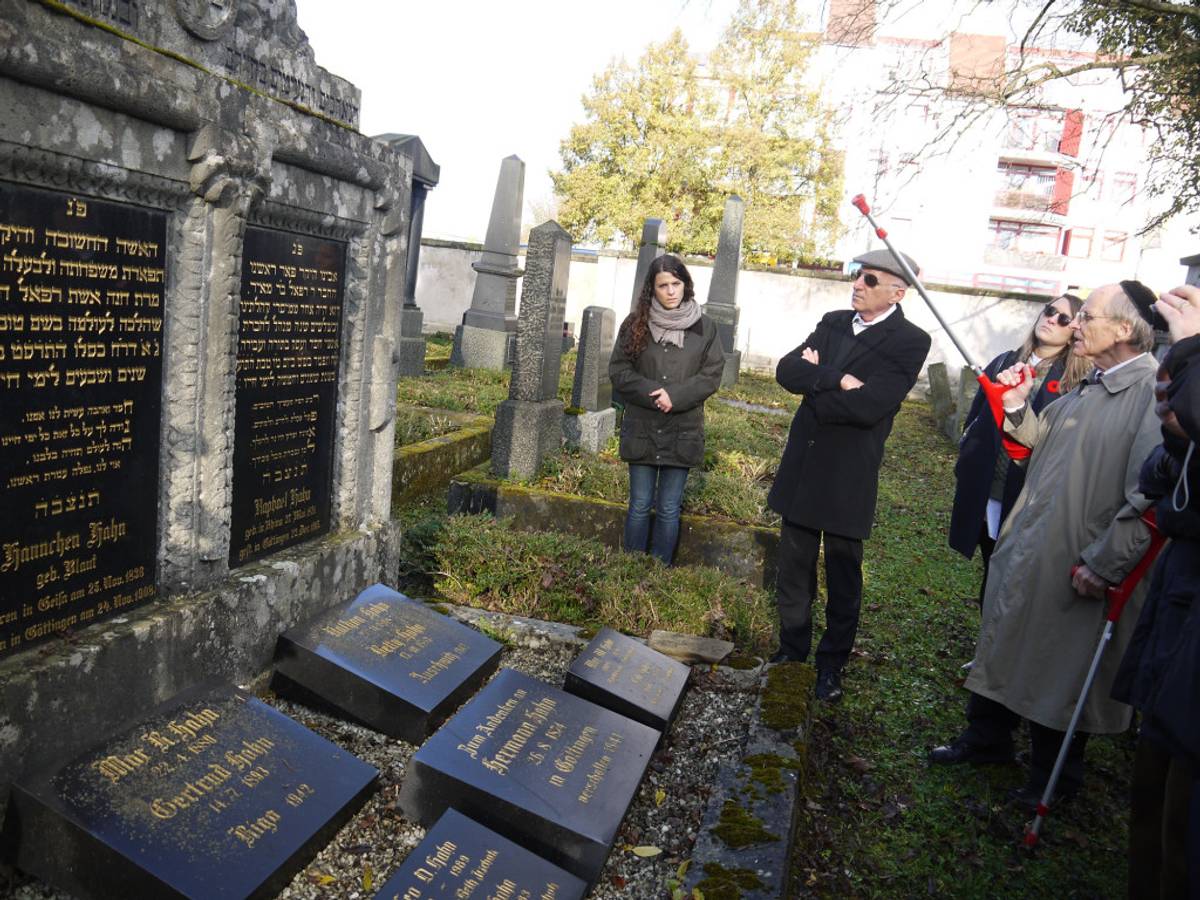
Saturday’s long day of family history began at the old Jewish cemetery, a 10-minute drive southwest of the city center. There we met our guide, Berndt Schaller, an octogenarian theologian and retired scholar of Jewish history. Schaller, though not Jewish, wore a black velvet kippah over his thin gray hair. He walks with the support of two red crutches, which he is prone to waving in the air when he wants to emphasize a point. Schaller led us among the gnarled stone gravestones, using his crutches to pull stray branches out of the way, the ground damp and springy beneath our feet. He showed us the graves of Max Raphael and Gertrud, Nathan and Betty, the stones etched with harsh-sounding names—Riga, Auschwitz. We also see many Hahn graves from earlier years, natural deaths, childhood deaths, stretching back through the 1800s. “We’ll find space for Hanni and Rudolf at some point,” said Hayden. The mood was solemn, silent, save for the roar of the cars from a nearby highway, as Hayden said Kaddish for his grandparents.
It was an emotional morning, and Hayden was clearly tense. As we walked, he strode briskly a few paces ahead of the rest of us, cutting an imposing figure in a long black coat, wire-framed ray-bans and a pageboy cap. Occasionally he stopped to listen to Schaller’s remarks, or to regale the group with an anecdote or historical tidbit. A yellow folder was tucked under his arm with scribbled sheets of loose-leaf paper containing notes for the many speeches he would give this weekend. Just the night before, he had given a dense academic lecture upon receiving his honorary doctorate from Göttingen University. Shortly after, he had given a searing oration in front of over a hundred scientific luminaries in honor of the TEVA-sponsored “Germany Israel Brain Alliance,” speaking passionately about his grandparents’ legacy and his hope for a more peaceful and collaborative future, while imploring the audience to look to Germany as a “prism through which we can all think harder about the danger of stereotypes and the difference between us and them.”
But now the academic and corporate fanfare was over. It was time to focus on his true purpose for the trip: To bring the town of his grandparents alive for his children, and to find a way, somehow, to move forward as a family. Today was to be a much more personal journey.
Hayden has been back a few times over the years, and as we walked he peeled back the city’s history for us in layers: There was the Hahns’ Göttingen, of course, and the horrific Nazi years, but there were also glimpses of a more recent history and the relationship he has forged with the city over the past few decades. As we exited the graveyard, Hayden pointed out the grave of Arthur Levi, who died in 2007. Hayden met Levi on a trip to Göttingen in 1986, back when Levi was an aspiring city mayoral candidate. Levi was one of the few Jews who returned to Göttingen after the war, and he had been a friend of Roger Hayden’s growing up. During that visit, Hayden had spotted a Mappah, a cloth Torah cover belonging to his grandfather, in the city museum’s collection. Levi gave him assurances that it would be returned to him, despite the city council’s refusal. On Feb. 4, 1987, a Canada Post mailman rang the doorbell at Hayden’s house in Vancouver with a package. It was the Mappah, a gift from Göttingen’s new mayor, Arthur Levi. Hayden’s third daughter, Jessica Raphaela Hayden—named for her great-grandfather, Raphael—was born that same day.
After the cemetery tour and return of the objects, we piled into vans and headed to the Hainberg Gymnasium to meet with our next guide, Tom Walliser, who would be showing us around the schools that Hanni and Roger attended. Fair, with clear blue eyes, gaunt cheeks and a buzzed head, Walliser wore a fanny-pack cinched around his waist and a pair of hiking boots, as if about to lead a particularly intensive class field trip. “I see this in many ways as homecoming for Hanni and Rudolf,” he said eagerly.
Hayden met Walliser for the first time back in 2011 and was immediately taken by him. Growing up with conservative parents who physically and psychologically abused him, with a grandmother who was a Nazi functionary and staunch supporter of South African apartheid, Walliser had a suffering that kindled a rebellious spirit in him. “What Michael said yesterday about the importance of dissent is my philosophy too,” he told our group. “I think we are linked in a certain way. We have a similar way of looking.”
Walliser believes in teaching by doing, in having his students speak with survivors and refugees, in digging through archives and in engaging with the physical sites of trauma, many of which lie beneath our feet. Back in 2011 he was a teacher at the boys’ school, the Felix Klein Gymnasium (FKG), where he was campaigning to get rid of the so-called “Nazi corner” a regularly maintained monument to the school’s Nazi war dead. Walliser finally got it taken down in 2013, after researching and writing a book about the school’s Nazi past titled FKG under the Swastika. He also succeeded in putting up a monument to the Jewish FKG alums who became victims of Nazism, including Roger Hayden. His activism, however, made his situation at the school untenable, so he quit and went to teach at Hanni’s old school, the Hainberg Gymnasium (HGA).
HGA is a massive four-story building dating back to 1866. Boxy and cream-colored, it has a red vaulted roof and a long driveway lined with leafless trees. In a second-floor hallway of the school, Walliser showed us a prominent memorial with the names, photos, and biographies of the school’s murdered Jewish students. A photo of Hanni Hahn taken alongside three of her friends and fellow Jewish classmates on the day of their expulsion from HGA, sat in a glass display case. Meen told us that of the four girls in the photo, two, including Hanni, survived. Sixteen Jewish women who had attended Hanni’s school were murdered during the Holocaust, a crime not officially recognized by the school until the 1990s.
Walliser introduced us to a group of ninth-grade students, nervous and giggly, who presented us with bottles of local salt from the Göttingen mines and thick slabs of German bread wrapped in wax paper. We met a vivacious 12-year-old named Lou, one of the school’s two Jewish students and part of the city’s growing Jewish community, who was there with her mother. “Did you have Shabbat yesterday?” Lou asked Diana Kanter, Hanni’s daughter. “No, we’re very secular,” Diana responded.
We left HGA and walked for about half an hour along the forested city ramparts toward Felix Klein, which sits on the southwestern edge of the old city. “Hanni and Rudolf would have walked along this path many times,” Walliser observed. The ground was covered in crunchy autumn leaves from the towering Linden trees above. Hayden stopped to observe a stone statue of a man on a raised pedestal. “Have you heard of the Gaussian distribution?” he asked the group, excitedly. “That’s Wilhelm Gauss. He’s from here.”
As is the case in much of Germany, it’s hard to reconcile Göttingen’s intellectual history and abundant natural beauty with its blood-soaked soil. As we walked, Walliser pointed out the sites of various atrocities: The square where the first deportation of the Göttingen Jews took place, a rose garden where Nazi war heroes were honored annually up until the 1980s. Exiting the park, we stopped at a basketball court with terracotta pavement, surrounded by a red brick wall overhanging with trees. Here, Walliser said, a Rwandan student of his was attacked in 2011, in broad daylight, by two neo-Nazis. When the student reported it to the police, at Tom’s urging, they threatened to deport him.
After a half-hour walk, we arrived at FKG. Like HGA, it is built on an immense scale, an imposing red brick building with huge windows on the front. In 1933, the swastika flag was raised over the school for the first time, where it flew over a decade. Tom, in the didactic manner of a grade-school teacher, pulled out a laminated chart, showing that 99 percent of the student body identified as Hitler Youth in 1935. “There must have been one who wasn’t,” he said, nodding to Hayden. “That’s your dad. That must have been incredibly hard.” Inside we visited the school assembly hall, where Walliser showed us a photo of that same room back in the 1930s, draped with swastikas, full of students doing the Nazi salute. We continued past the site of the old “Nazi Corner,” now removed, and a WWI memorial that still stands, although it omits the names of Jewish soldiers. “We only recently realized this was problematic,” one of the FKG teachers acknowledged with a sheepish look.
Outside, next to an athletic field, was the memorial that Walliser had been instrumental in setting up, featuring the names of 21 Jewish FKG students engraved on three stones inlaid in a circle of pebbles. When Tom’s wife went to check on it the day before, she found it in a state of disrepair, covered in weeds and dirt, and rushed to clean it up. For us, at least, it looked pristine. Hayden bent over to touch the stones. Then he gathered in the descendants of Roger Hayden for a group picture.
Later, Walliser would tell me how invigorating and emboldening the Hahn’s trip was for him personally. “I see all the difficulties I’ve had, all the difficulties that other historians have had, and now Hayden comes along with his energy, but also with his reputation, and maybe money sometimes open doors as well, or just hearing how famous he is, what a great scientist he is. It makes things a lot smoother. So, I think he might also pave the way for those who might come afterwards,” he said. “It’s a great sign of hope and of a change that is long overdue here.”
***
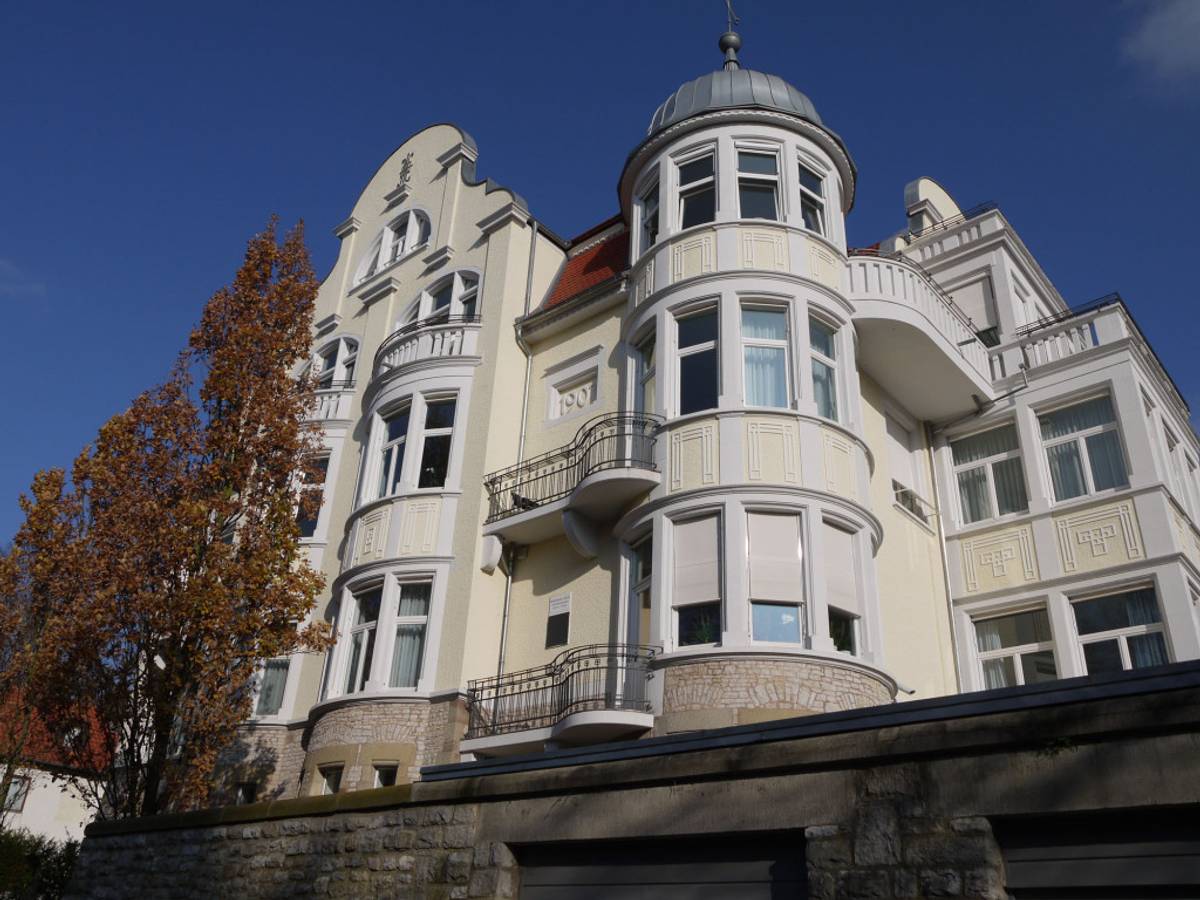
Our last stop of the day is Merkelstrasse 3, which is now home to the Hogrefe publishing house, a publisher of scientific texts. This is the house where Hanni and Roger grew up, where they lived their happiest years in Göttingen, a life of cultured elegance surrounded by art and antiques and elegant furnishings—including the rococo living-room set that was returned to the family this morning. It is also the house whose windows were smashed on Kristallnacht, its inhabitants beaten and hauled to jail in the middle of the night. Situated in a leafy residential neighborhood just east of the city center, the house is easily the most impressive on the street: five floors covered in balconies and windows of all shapes and sizes, with white trim and spiraling turrets.
We were greeted there by Cordula Tollmien, a historian with frizzy gray hair and dark, expressive eyebrows peeking out from wire-rimmed glasses. An historian of the Jews of Göttingen, Tollmien had written extensively about the Hahn family for years. In 2011, she got an email from Hayden, introducing himself as the grandson of Max Raphael Hahn. “It was more than being excited—she was electrified,” said Angelika, her partner and de-facto English translator, remembering Hayden and Tollmien’s first meeting in 2011. “Max Raphael Hahn for her was part of a certain layer of history. And suddenly this layer became vivid in our present time, in the person of Michael.” She organized their trip back in 2011, and in 2013 she asked permission to translate the book about Max Raphael’s Judaica collection into German and to add context for German readers.
Next, Tollmien approached the head of Hogrefe Ltd., Juergen Hogrefe, to see if they would consider making an exception to their tradition of only publishing scientific texts by publishing the German edition of the book about Max Raphael Hahn’s life. Hogrefe consented at once, agreeing to arrange also for the unveiling of a plaque of honor dedicated to Max Raphael and Gertrud Hahn. In this way, the new tenants would honor the old. In a story marked by rupture and schism, here in the courtyard at Merkelstrasse 3, there was the remarkable sense of things coming full circle.
In a small stone courtyard, a crowd of around 50 gathered to watch the unveiling of the plaque for Gertrud and Max Raphael. Göttingen already has over 300 such plaques around the city honoring its significant citizens. Hogrefe, slender, in a long navy coat and thin scarf, told us that normally four and five people are expected for such an unveiling. “Clearly we have a special case here,” he said, beaming. For the first time during this symbolic homecoming weekend, Hayden was visibly crying. He entered the house and emerged onto a second-floor balcony, where a piece of cloth was stripped away to reveal an inscription honoring his grandparents. The crowd below applauded, a clap that seemed to contain multitudes—for the memory of Max Raphael and Gertrud, for Hayden’s singular efforts, and for the historic significance of this moment.
Inside, Hogrefe had restored the house lovingly and with painstaking attention to detail, down to the original crown moldings. The house was built on a massive scale, with high ceilings and towering white shelves stacked with science and medical texts, and the family looked in awe at the grand space that was once their home, now filled with trendy light fixtures and modern furniture, before stepping out onto two semicircular balconies to gaze at the city lights below. A number of scientific luminaries from yesterday’s TEVA event were in attendance, as were people from the University. Tom Walliser was deep in conversation to Sarah Hayden, while Berndt Schaller pored over Tollmien’s book, leaning on his distinctive red crutches. Hayden and Tollmien were talking animatedly, his hand or her arm, and he handed her a copy of the book to sign. Angelika, Tollmien’s partner, clasped Jess Hayden’s hand, “I know all the family photos by heart, and you look just like your great grandma on the Lasch side,” she told her warmly. A Hogrefe employee handed Tom Kanter a piece of the house’s original banister, from before it was renovated.
Later, Hayden told me about his favorite photograph from our time at Merkelstrasse. He had gone up to thank everyone, and unbeknownst to him, a slide of Max Raphael had been projected on the wall behind him as he spoke. “It’s in his home and I’m speaking and he’s looking down on me,” he said. “And that felt incredibly comforting.”
That night Hayden invited us all out for dinner and drinks (he is the only one who seems immune to jet-lag). The mood was buoyant, with Hayden laughing and giving toasts. As we explored the city, we were surprised to find it trendier than it looked at first glance, with a number of underground bars and speakeasies. “It’s quite cool, this town!” said Hayden giddily. For a trip with such a weighty purpose, the mood was surprisingly light. The family sat in a grungy bar outfitted with vintage train seats and, like the final night of summer camp, each offered reflections on the trip, before they dispersed around the globe again.
“I thought this was going to be a little town in Germany giving a little piece of history back to this little family, and it’s so much more than that,” said Tom Kanter, Hayden’s nephew. “And it was so meaningful to them, too.”
“I think for all the cousins, most of us don’t live where we were born, and me and my brother grew up moving all over and never feeling like we had a true home,” offered David Kanter as we took a final stroll through the town the next day. “It’s nice to feel like there’s somewhere we come from.”
At the same time, David said he was struck by the extent to which racism still exists here. “I think Germany is between Mongolia and Liberia in places I’d want to live. But I’d visit again.”
***
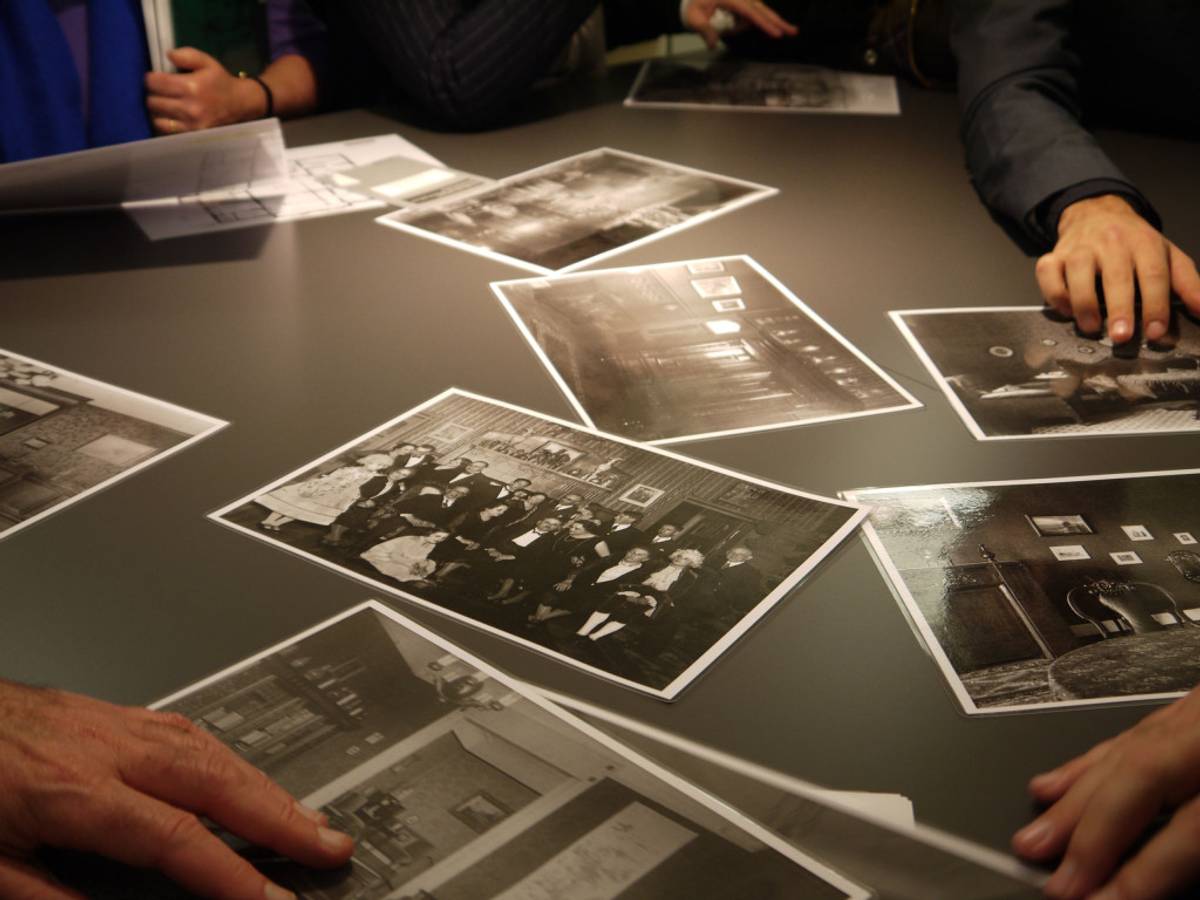
I met up with Hayden a month later in the lobby bar of New York’s Parker Meridien hotel. He arrived in the lobby with two wheelie bags in tow, his shoulders dusted in snow, and embraced me warmly. He apologized for being late for our meeting, explaining that he had been waylaid by an unforeseen five-hour layover in Istanbul. It had been a long week: After a quick trip to Croatia to meet with the country’s president, he had met briefly with shareholders in Amsterdam before heading to New York, where he was speaking to a few hundred Wall Street investors about TEVA. Several weekends ago, he traveled to London with his son to see the Man U/Arsenal game, a gift for his 63rd birthday.
Hayden acknowledged that there had been a shift within him since our trip, a quiet transition that enabled him to embrace, for the first time, his German roots reaching back almost 500 years. “For the first time in my life—it’s never even entered my head—but I asked myself, maybe I should get a German passport. I’m not going to, but even the fact that I thought it was a huge shift for me.” He allowed the thought experiment to play out a little further. “What surprised me is there was a life to Göttingen outside all of the stuff we were going through that seemed fun, that seemed interesting. Lots of little antique stores. It seemed like quite an interesting little place. There was a moment I thought, well, maybe I should be a professor in Göttingen, and if I had, would [my daughter] Anna have gone to Göttingen medical school? Would she be a German physician right now? These weird, ridiculous thoughts came into mind.”
Recently, Hayden bid on an auction item from a catalog that he plans to add to his collection: a 1927 poster from a travel agency at 27 Judenstrasse Street, half a block from the house where his father grew up. “It’s from the height of wonderful life in Göttingen. It captured a life of glamour and elegance that I thought spoke about life in Göttingen in the ’20s,” he told me. He said he was going to pick it up when he is back in Amsterdam next week.
Meanwhile, Sharon Meen is hard at work writing a detailed history of Max and Gertrud’s life, based on the documents of the Hahn collection, in particular the correspondence among the family members. Hayden’s first cousin Diana Kanter, keenly affected by the people we met, tells me that she too is thinking of writing a book, perhaps one that will focus on the stories of our four guides on the trip—Tom Walliser, Christian Riemenschneider, Berndt Schaller, Juergen Hogrefe. “I thought each of them, for different reasons and different motivations had all come together on this one day in November, to the advantage of our family, so looking at their stories and how they got there,” she said. “There’s a deep humanity to what happened that day, even if it’s fleeting.”
In Göttingen, too, the hard work continues. Just as I was finishing this piece, Christian Riemenschneider wrote to tell me that he had made an exciting discovery in the museum’s archive: Twelve more items belonging to the Hahn family that nobody knew existed, because they had been erroneously labeled as Halm, not Hahn, in the museum’s records. He also added that he is finally closing in on the location of two missing alabaster vases known to have belonged to Max Raphael Hahn. “Today, I found the first hint to their whereabouts!!!” he wrote, in an email peppered with smiley-faced emojis. “This was indeed a very lucky week.”
A decision must now be made as to what will happen to the objects still housed in the Göttingen City Museum. Hayden isn’t sure that having the objects divvied up among the family and sent across the world is the best approach. For the first time, inspired by the goodwill engendered on our visit, he is coming around to the idea of leaving them in the care of the Göttingen Museum, as part of a permanent exhibit. And of course, there is the question of how to safeguard and display the thousands of family documents that came in the shipping containers: “To find a home and a place for them that we all can visit but without being burdensome,” he said. “And then I think the best thing we can do is live life fully ourselves, and just do the best things we can for this world.”
***
The Tablet Longform newsletter highlights the best longform pieces from Tablet magazine. Sign up here to receive bulletins every Thursday afternoon about fiction, features, profiles, and more.
Anna Silman is the deputy entertainment editor at Salon.